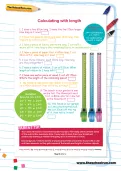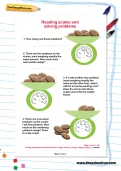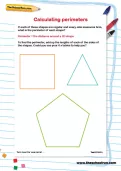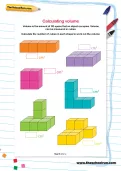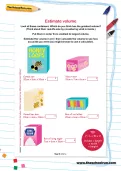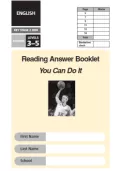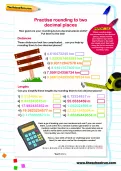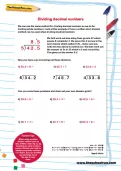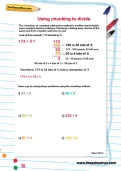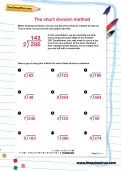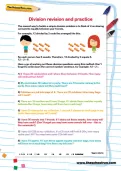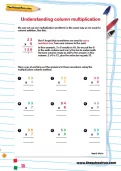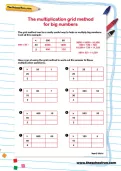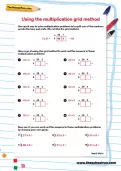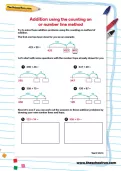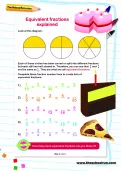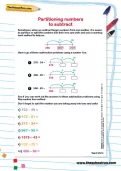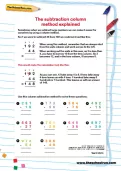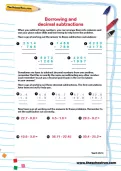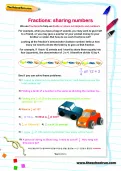A worksheet to help your child understand what the <, > and = symbols mean. It also helps with understanding of grams and kilograms.
or
Register to add to your saved resources
Already a subscriber? to view this content.
Download and print this complete set of English SATs papers from 2004 to assist your child in preparing for the KS2 tests with some at-home revision and practice.
or
Register to add to your saved resources
This worksheet gives lots of examples of very long numbers; children need to work out how to round each one to two decimal places.
or
Register to add to your saved resources
Already a subscriber? to view this content.
A worksheet to help your child understand an easy method for dividing a number with two decimal places by a whole number.
or
Register to add to your saved resources
Chunking, or repeated subtraction, is a way to tackle complex division problems. This worksheet offers a step-by-step guide to the technique and some calculations to practise it on.
or
Register to add to your saved resources
Already a subscriber? to view this content.
Splitting big numbers can help your child learn to divide them correctly. Remind them to watch out for remainders!
or
Register to add to your saved resources
Already a subscriber? to view this content.
This worksheet helps your child learn to set out their calculation using the long division method, then use it to solve division problems.
or
Register to add to your saved resources
Already a subscriber? to view this content.
Help your child tackle simple division problems, practising how to translate a story problem into a number sentence.
or
Register to add to your saved resources
Already a subscriber? to view this content.
Review the column multiplication technique and consolidate the learning with plenty of practice. Don't forget to carry over numbers from one column to the next!
or
Register to add to your saved resources
Already a subscriber? to view this content.
The multiplication grid method is a simple technique to help children learn to multiply big numbers. Review the technique with this worksheet and then put it into practice.
or
Register to add to your saved resources
Already a subscriber? to view this content.
One of the multiplication techniques your child will be taught is the grid method. This worksheet will help your child revise the method and practise solving multiplication problems.
or
Register to add to your saved resources
Already a subscriber? to view this content.
Column addition practice is much easier if your child is using a grid to help them keep the units, tens, hundreds and thousands in the right place value columns! Working through this worksheet will help them test the technique.
or
Register to add to your saved resources
Already a subscriber? to view this content.
'Carrying' numbers from one place value column to another is an important part of column addition. Help your child master the skill with this worksheet, which offers a plain-English guide to the technique and then exercises to complete to consolidate the learning.
or
Register to add to your saved resources
Already a subscriber? to view this content.
Column addition is taught in two stages, and this worksheet offers a step-by-step overview of the technique (it'll be familiar from your own school days, but a refresher always comes in handy!). Your child will need good place value skills to complete the addition problems; column addition grids have been provided to help them.
or
Register to add to your saved resources
Already a subscriber? to view this content.
Counting on in hops and number lines are the methods used to solve these addition calculations. This worksheet offers your child a step-by-step reminder of the technique and then lots of addition problems to practise on.
or
Register to add to your saved resources
Already a subscriber? to view this content.
An excellent KS2 worksheet created by an experienced teacher to help your child learn about finding equivalent fractions and calculating them. The pictorial representation is particularly helpful when explaining the concept to your child.
or
Register to add to your saved resources
When solving problems using a number line your child will learn to partition the number and count back. This worksheet explains the technique and offers some subtraction problems for your child to practise on.
or
Register to add to your saved resources
The column method makes subtracting large numbers easy. Revise borrowing and place value and practise the calculation with this worksheet. How fast can your child complete the sums correctly?
or
Register to add to your saved resources
Already a subscriber? to view this content.
Subtracting decimal numbers means using place value skills and borrowing - and remembering to put the decimal point in the right place! This revision worksheet will help your child practise subtracting large numbers correctly.
or
Register to add to your saved resources
Already a subscriber? to view this content.
Fractions help us divide or share out numbers or objects. Can your child solve these simple fractions number problems by using their knowledge of numerators and denominators?
or
Register to add to your saved resources
Already a subscriber? to view this content.
